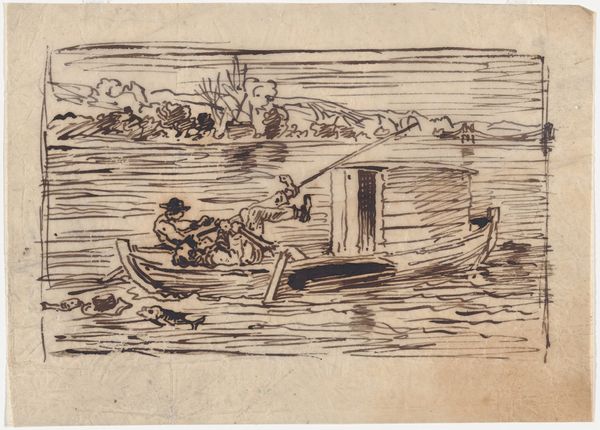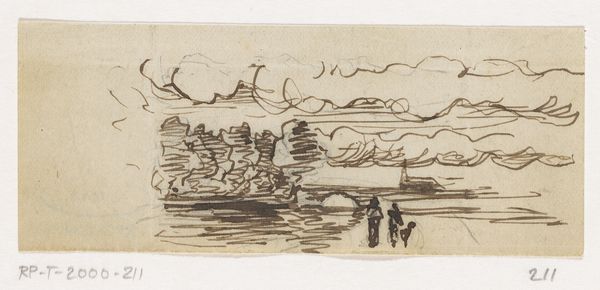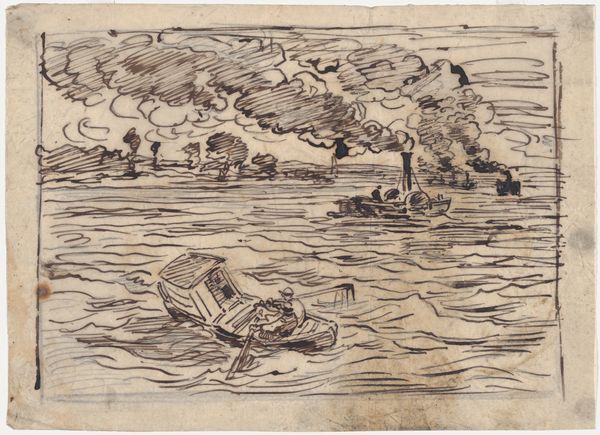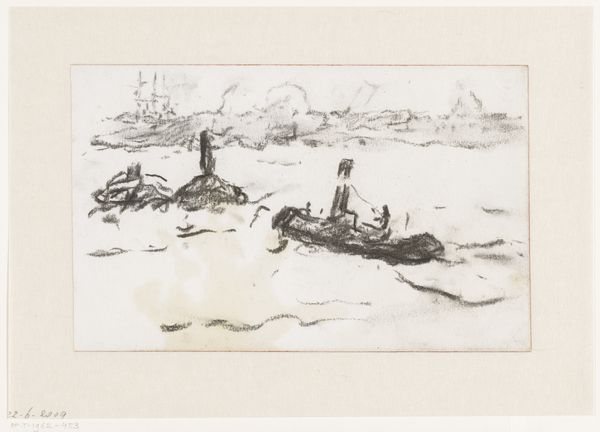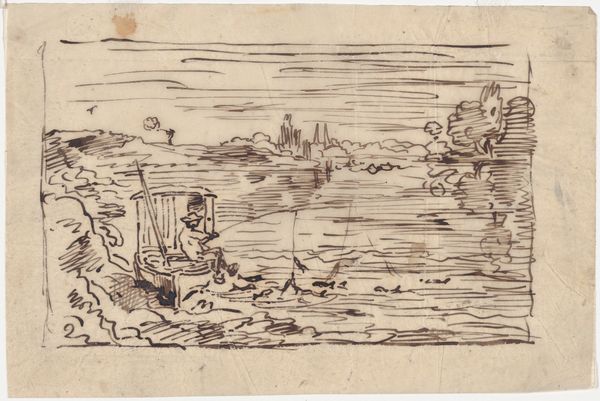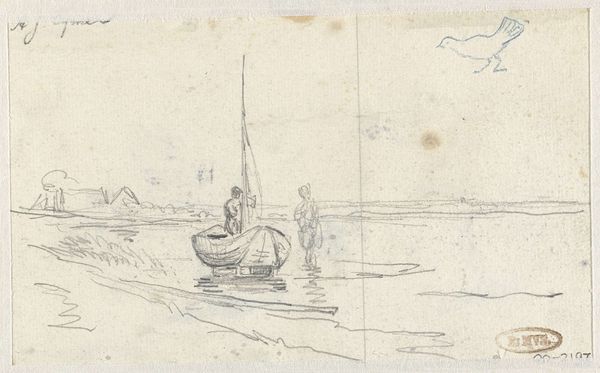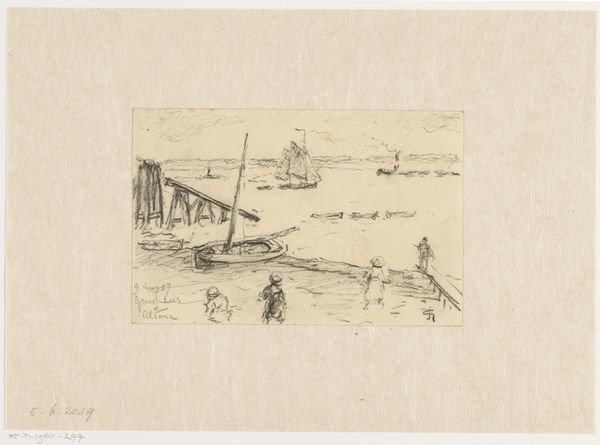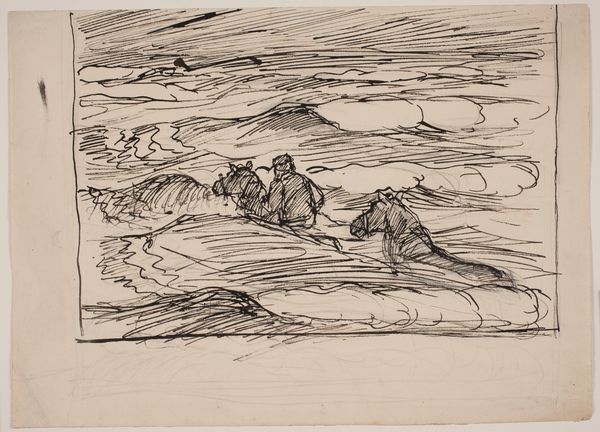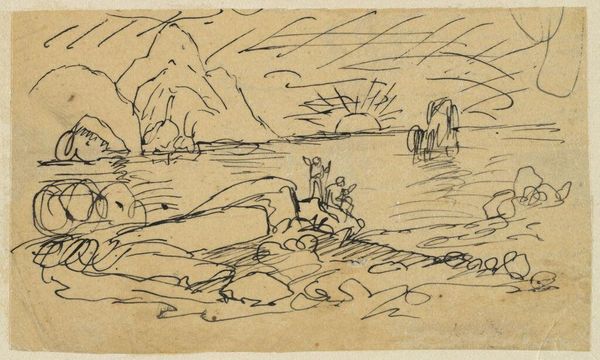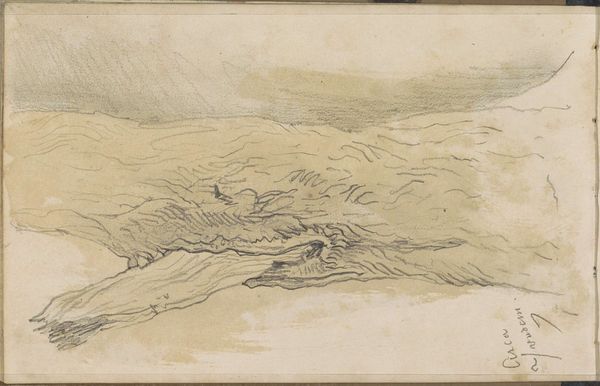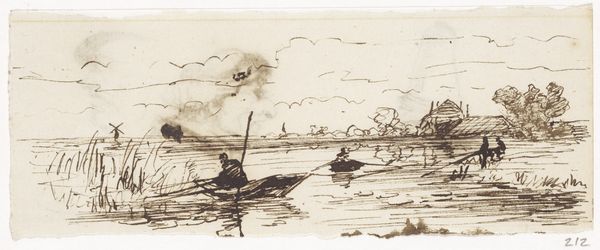
Cabin Boy Hauling the Tow-Rope or Hauling by Rope 1862
0:00
0:00
drawing, ink, pencil
#
drawing
#
ink drawing
#
landscape
#
ink
#
pencil
#
realism
Dimensions: Sheet: 4 15/16 × 7 3/8 in. (12.5 × 18.8 cm)
Copyright: Public Domain
Curator: Daubigny’s ink and pencil drawing, “Cabin Boy Hauling the Tow-Rope,” completed around 1862. I feel the weight of the air here. It’s like you can almost smell the river, don't you think? Editor: Absolutely, it’s thick with atmosphere! But also, that weight you describe speaks to the harshness of labor, doesn't it? I’m drawn to the figure, that small boy pulling what appears to be a rather large boat— Curator: You see it, too! It's a world of work, and Daubigny, I feel, captures that tension between labor and leisure beautifully. Look at how loose and free the lines become as they define the sky and water. But then, the boy and the boat, they’re rendered with such painstaking detail. Editor: Precisely. It brings into focus the socioeconomic disparities inherent to this idyllic riverside scene. The artist isn't just offering us a pretty picture. He is showing us the reliance on this child’s strength that the tranquility of the scene hinges upon. Curator: And even within the boat, the darkness inside hints at further lives at work! I often wonder about the ducks swimming calmly along the water… are they meant to be symbols of freedom, completely oblivious? Editor: Possibly! It is this sort of deliberate placement, I think, that situates this artwork within a complex narrative. There's an undeniable tension—a quiet friction between human exploitation and environmental calm. It’s the reflection on water itself – broken but present. Curator: Beautiful. To capture so much in a fleeting sketch. What's fascinating is how Daubigny himself traveled by boat to capture such fleeting atmospheric conditions and rustic, rural subject matters. Editor: That almost voyeuristic vantage is interesting to note, the artist passing through the landscape rather than integrated into the scene. This perspective introduces critical questions about privilege, who is allowed to partake in leisure, and who is consigned to labor. Curator: Ultimately, what's so great is how open it is to interpretation. We each find our own threads within the textured lines. Editor: Agreed, its enduring relevance speaks to our continued grappling with environmentalism, capitalism, and questions of equity.
Comments
No comments
Be the first to comment and join the conversation on the ultimate creative platform.
